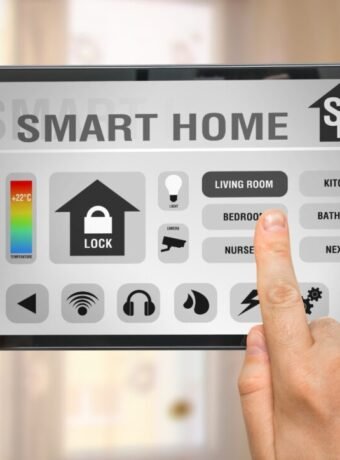Seniors today are more connected than ever. From video calls with family to managing finances online, the digital world plays an essential role in daily life. However, as our online presence grows, so does the risk of cyber threats. Weak or reused passwords make it easy for hackers to gain access to your personal accounts, potentially leading to identity theft or financial loss.
Studies have shown that even an 8-character password, when not sufficiently complex, can be cracked in mere seconds by automated tools. Cybersecurity research from firms like Hive Systems confirms that short passwords—even with mixed characters—are vulnerable to modern hacking techniques.
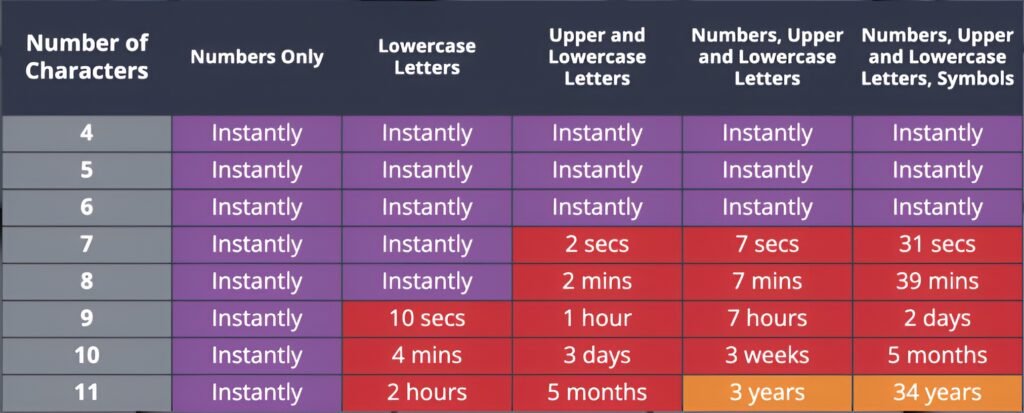
Why Traditional Password Practices Fall Short
Many of us still rely on passwords that are simple to remember: birthdates, names of grandchildren, or even the same password across multiple sites. These practices, though convenient, leave your online accounts exposed. As hacking tools become more sophisticated, using the same or weak passwords can compromise your entire digital life.
Fun fact: The UK National Cyber Security Centre analysed lists of hacked accounts available on the dark web. The analysis concluded that the following are the world’s most popular passwords:
- 123456
- 123456789
- qwerty
- password
- 1111111
- 12345678
- abc123
- 1234567
Ridiculous? Ludicrous that anyone would be that foolish? Sure, but how many use the names of children, birthdates, or a combination thereof? We fall into the trap of using the ones we can remember. And we often use the same for multiple sites and accounts! In today’s world, hackers are becoming more sophisticated and are using the very latest technology to crack passwords.
The reality is that every password needs to be unique. It needs to be at least 12 characters in length. And, it needs to be a combination of letters, numbers, and symbols! But if every password you use needs to be unique – and a minimum of 12 characters, how are you ever going to remember them? Keeping a list on your computer? Hardly! A list on paper? Only if you can guarantee you’ll never get burgled!

Securing Your Digital Life Using a Password Manager
A password manager is a digital tool designed to generate, store, and manage complex passwords for all your online accounts. Instead of trying to remember dozens of different passwords, you only need to remember one master password. This not only simplifies your online routine but also ensures each account has a unique, strong password.
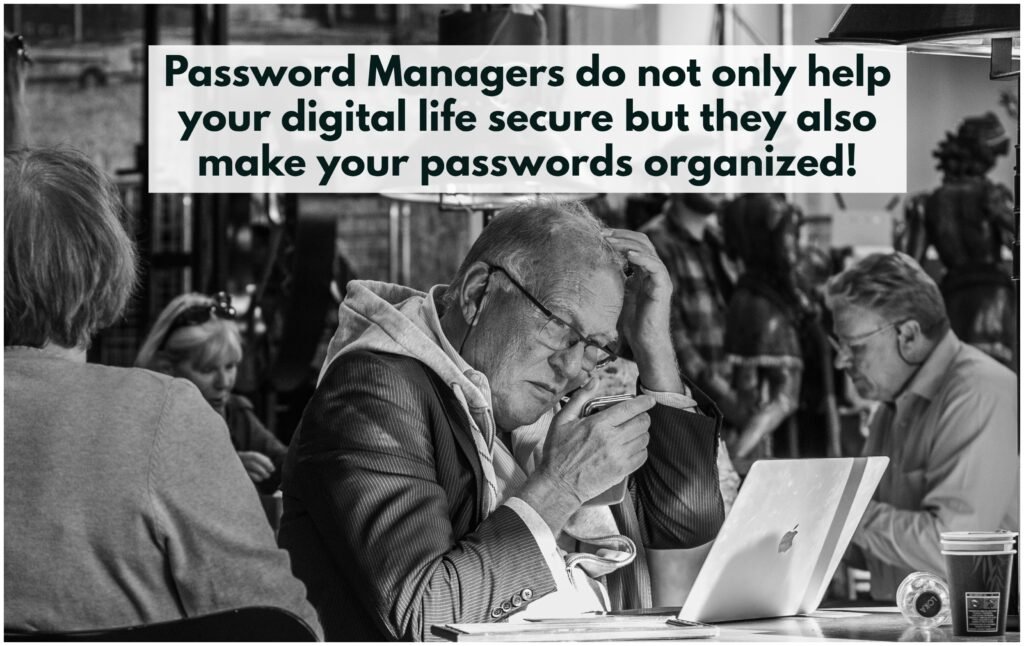
Prefer to listen rather than read?
Unlocking the Benefits of Password Manager
A comprehensive, up-to-date password manager can help you create and store strong passwords for all of your accounts. This ensures all your data is protected, as well as prevents the chance of someone accessing your accounts.
Here are its top 5 benefits:
- Enhanced Security
- Password managers create long, unique passwords—typically at least 12 characters long—combining letters, numbers, and symbols. This makes them virtually impossible to guess using brute-force methods. Research has demonstrated that these complex passwords are far more secure than the simple ones many of us have used in the past.
- Convenience
- With a password manager, you store all your credentials securely in one place. You no longer have to scribble them on a notepad or rely on memory, which can be especially beneficial if you’re managing multiple accounts.
- Time-Saving
- Auto-fill options allow the manager to enter your login details on websites automatically, streamlining your online experience. This means less time logging in and more time enjoying the benefits of digital connectivity.
- Organizational
- Password managers help you keep your digital life organized by categorizing your accounts. You can quickly search for a particular login or update a password, reducing the stress of maintaining numerous credentials.
- Cross-Device Compatibility
- Whether you’re using a desktop at home, a tablet on the go, or a smartphone for quick access, many password managers work seamlessly across all devices. This ensures that you have secure access to your passwords no matter where you are.
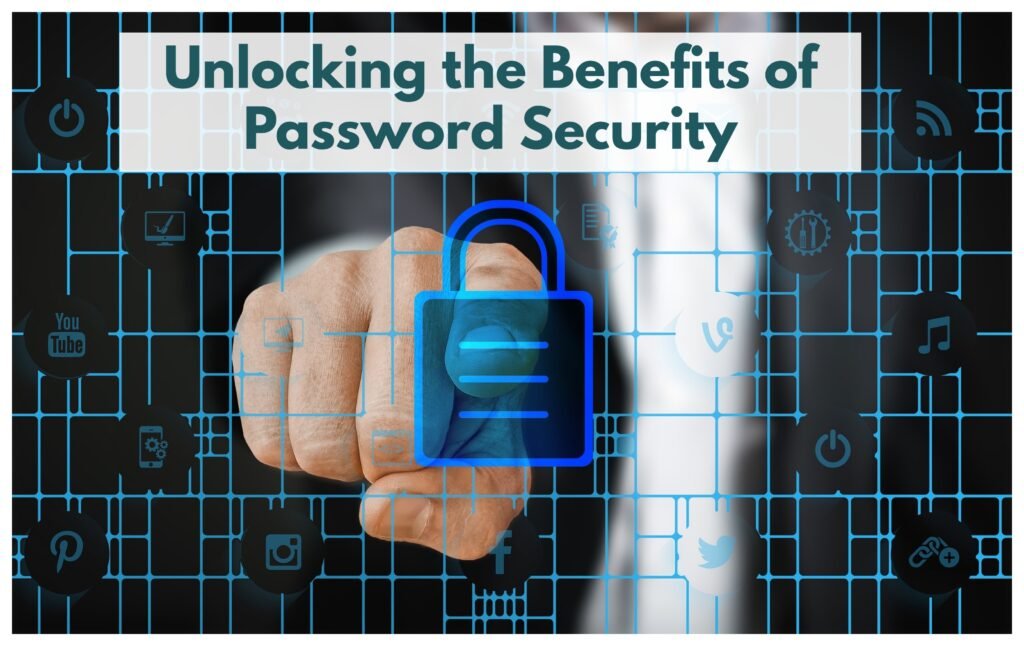
Different Options for Password Managers
There are many different options available, each with its own set of features and capabilities. Here are three of the most popular:
- PureKeep
- Purekeep offers the easiest way to secure your passwords, it also helps you create complex passwords and keep sensitive information.
- Bitwarden
- Bitwarden is a comprehensive, open-source password management system that provides secure and efficient solutions for personal, corporate, and team use.
- 1Password
- 1Password offers a variety of features, such as secure password storage, one-click logins, and an advanced security audit.
Say goodbye to worrying about remembering all of your passwords! With these three Password Managers, you can rest assured that your accounts are secure and your data is safe. These handy solutions have you covered. Never again will you have to agonize over your username and password combinations. With the latest encryption technologies, your digital accounts are safeguarded from any malicious activity.
How to Set Up and Use a Password Manager
Setting up a password manager is one of the most important steps in securing your digital life. Setting up a password manager is generally quite straightforward and can be done in a few simple steps:
Step 1: Choosing and Installing the Password Manager
After comparing your options and selecting the one that best fits your needs, download and install the password manager on your devices. Most managers are available as applications for desktop and mobile platforms, as well as browser extensions for easy integration with your online activities.
Step 2: Creating Your Account
Once installed, create an account by choosing a strong master password. This master password should be something memorable yet complex—aim for at least 12 characters with a mix of uppercase and lowercase letters, numbers, and symbols. Remember, this is the only password you need to remember, so make it count!
Step 3: Importing Your Passwords
Many password managers offer an import feature that automatically captures your passwords as you log in to various websites. Alternatively, you can manually add your credentials. Some managers even provide tools to check if any of your passwords have been used across multiple sites or if they are too weak.
Step 4: Enabling Two-Factor Authentication (2FA)
To further secure your account, enable two-factor authentication if your chosen manager offers it. This means that even if someone discovers your master password, they still need a second verification step—such as a code sent to your mobile device—to access your data.
Step 5: Organizing Your Digital Vault
Organize your stored passwords using folders or tags. This can be particularly helpful if you manage various types of accounts—like banking, social media, and healthcare—and want to find them quickly without scrolling through an endless list.
Step 6: Regularly Updating Your Passwords
Even with a password manager, it’s important to periodically update your passwords. Most experts recommend changing passwords every 90 days. Many password managers include features that remind you when it’s time to update, ensuring you’re always protected with the latest security measures.
Generating Uncrackable Passwords with a Password Manager
Password manager eliminates the need to come up with passwords on your own and ensures all your accounts are secured with uncrackable passwords. It uses strong encryption algorithms to protect your data from malicious attacks and potential breaches. They also provide features like two-factor authentication and auto-lock, which add an extra layer of security.

What is Considered a Secure Master Password?
A secure password is a combination of letters, numbers, and symbols that are difficult to guess or crack using brute force methods. A secure password typically has the following characteristics:
- Length
- A long password is more secure than a short one. At least 12 characters are considered to be a good starting point for creating a secure password.
- Complexity
- It should contain a combination of upper and lowercase letters, numbers, and symbols. Avoid using dictionary words, common phrases, or personal information such as your name or date of birth.
- Unpredictability
- It should not follow any recognizable pattern or be based on easily guessable information. Avoid using obvious patterns such as “123456” or “qwerty.”
- Unique
- It should be unique to each account and should not be used for multiple accounts.
- Regularly Changed
- It should be changed regularly, preferably every 90 days.
- Memorable
- It should be memorable so that you don’t have to write it down.
- A good way to create a memorable password is to use a passphrase, a combination of words or a sentence that you can remember.
Remember, using a secure password is just one step in protecting your online accounts. It’s also important to enable two-factor authentication, avoid clicking on suspicious links or downloading unknown files, and regularly update your software and devices to prevent security vulnerabilities.
Two-Factor Authentication (2FA)
While a password manager provides a strong line of defense, adding two-factor authentication (2FA) further enhances security. With 2FA enabled, you must verify your identity through an additional step, such as entering a code sent to your phone. This extra measure protects your accounts even if someone manages to obtain your master password.
How do I access my password manager?
Accessing your password manager varies by type, but usually, there are a few common methods. Let’s check them out.
Using a Desktop or Mobile App
- If you have installed it as an app on your computer or mobile device, you can open the app and log in using your master password.
- Once you’ve logged in, you should be able to see your it vault, where you can add, edit, and delete them.
Using a Web Browser Extension
- If you have installed it extension for your web browser, you can usually access it by clicking on the extension icon in your browser’s toolbar.
- This should bring up a window that allows you to view, edit, and add passwords for the websites you visit.
Using the Password Manager’s Website
- Some password managers provide web access to your vault.
- In this case, you can access your it by logging in to the website using your account credentials.
To access your password vault, use your master password. If you forget it, you won’t be able to recover your stored passwords. Resetting the vault means deleting all passwords and creating a new master password, a time-consuming process. Choose a strong master password and keep it secure to avoid this issue.
Some password managers offer account recovery features, which allow you to reset your master password if you can verify your identity using other authentication methods, such as email verification, security questions, or biometric authentication. Nevertheless, this feature is not available in all password managers, and it’s essential to check the recovery options available before choosing a password manager.
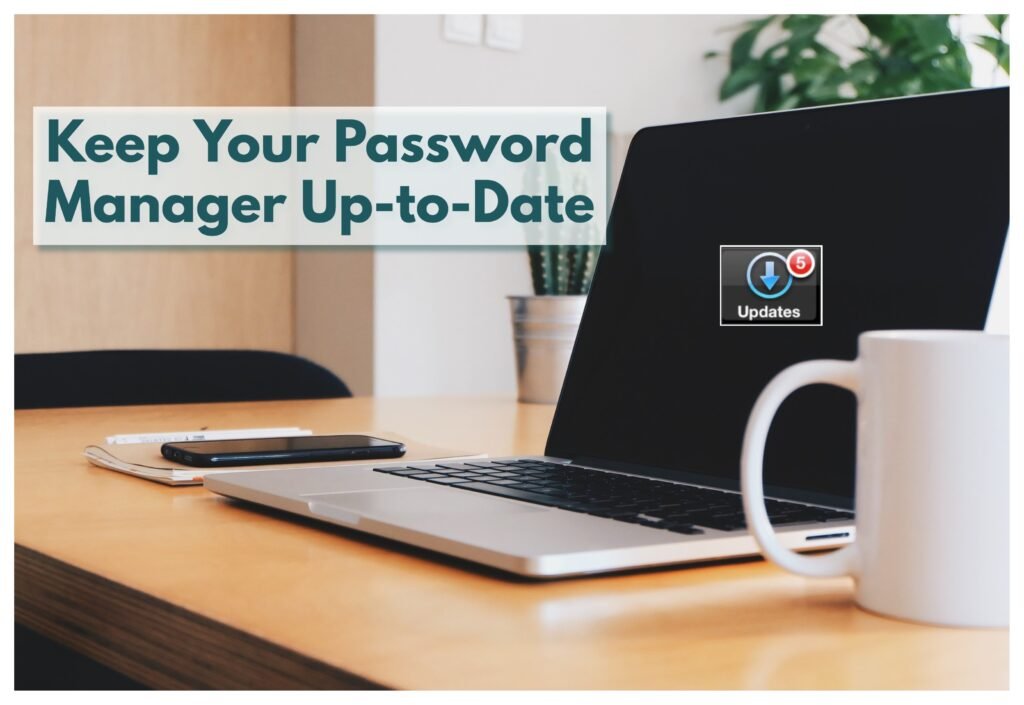
Keeping your Password Manager updated is crucial for digital security. Regular updates help prevent hacking risks and ensure the use of secure encryption methods. Stay current with security features and check for new options to protect your digital life. Automated security updates can help you stay ahead of cyber threats, while subscribing to security news can keep you informed and secure your data.
The Future of Digital Security for Seniors
Evolving Threats and How to Stay Protected
Cyber threats are continuously evolving. For seniors, who may not be as immersed in the latest technological trends, it’s crucial to adopt proactive security measures now. Password managers, combined with other security practices, provide a robust defense against common cyber threats like phishing, malware, and hacking.
The Role of Community and Support
Many seniors find reassurance in community support. Consider joining online groups or forums dedicated to digital security for seniors. These communities can provide practical tips, share experiences, and offer guidance in a language that’s easy to understand. The more you know, the more confidently you can navigate the digital world.
Trusted Resources for Ongoing Learning
Here are some trusted resources to help you stay informed:
- National Cyber Security Centre (NCSC): Provides up-to-date advice on digital security.
- Cyber Aware: A UK government initiative offering practical tips on online safety.
- Consumer Reports on Technology: Offers unbiased reviews and security insights on various tech products, including password managers.
By staying informed and proactive, you can adapt to emerging threats and continue to protect your digital life effectively.
Conclusion
For seniors, ensuring your digital accounts are protected is not just about keeping your information safe—it’s about maintaining your independence and peace of mind. A password manager is a powerful, fact-based solution that simplifies password management and bolsters your digital security. By using one, you ensure that each of your accounts is safeguarded with a unique, robust password, making it far less likely for hackers to gain access.
From enhanced security to the convenience of auto-filling login details and the ease of accessing your passwords across devices, a password manager is an indispensable tool in today’s digital landscape. Combined with additional measures like two-factor authentication, regular software updates, and secure browsing practices, you can build a comprehensive defense against cyber threats.
Remember, your digital security is a key component of your overall well-being. With the right tools and a proactive approach, you can enjoy the benefits of modern technology without the constant worry of being vulnerable online.
Take action today: choose a reputable password manager, set it up following best practices, and embrace a safer digital lifestyle. In doing so, you protect not only your personal information but also your ability to stay connected, informed, and independent in this digital age.
Disclaimer
The content provided on MySeniors.World is for informational purposes only and is not intended as either financial or medical advice. Always consult a qualified professional before making any investment or health-related decisions.
Posts may contain affiliate links, meaning we earn a commission – at no additional cost to you, if you click through and make a purchase. Your support helps us continue providing valuable content.


